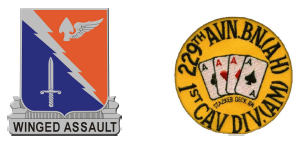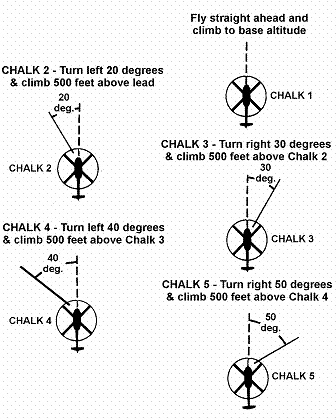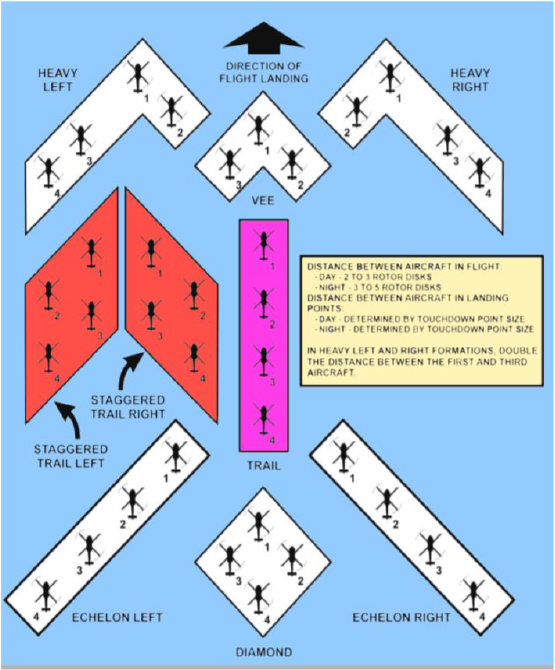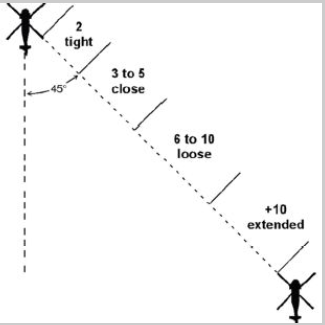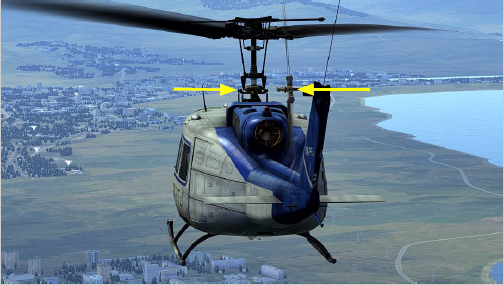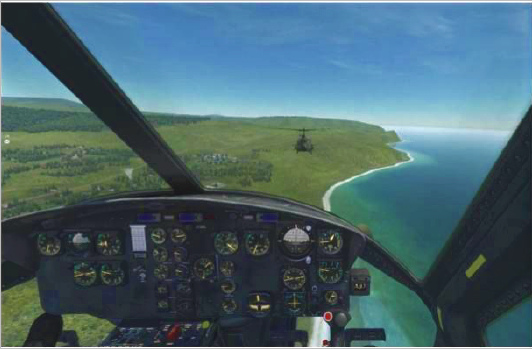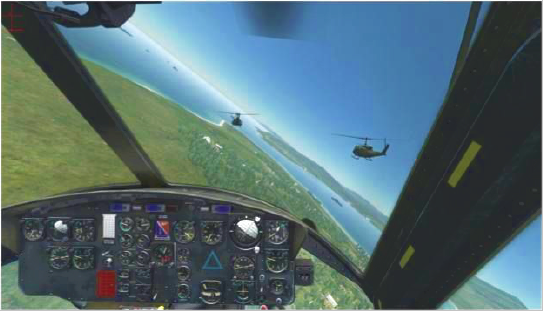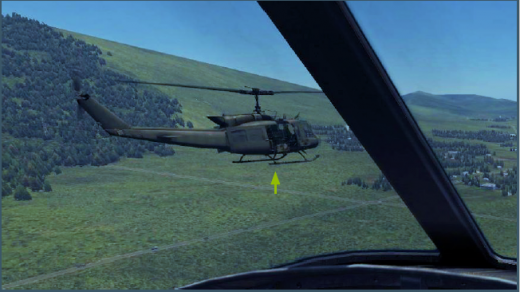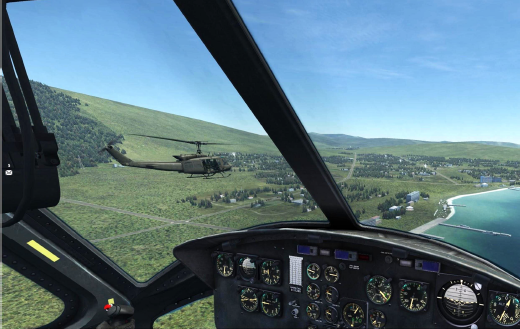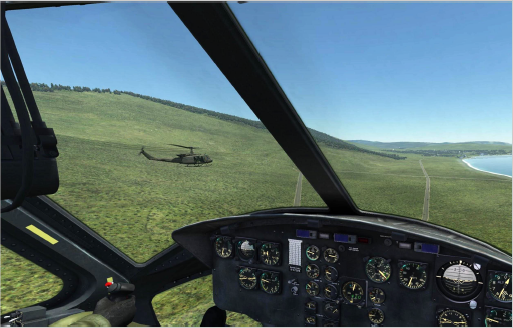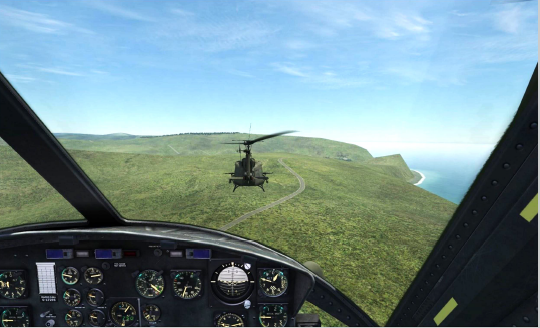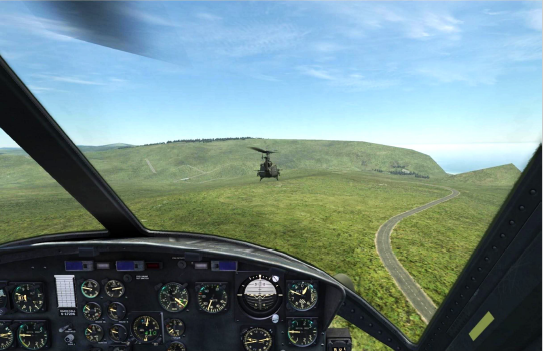Difference between revisions of "Multi Aircraft Operations"
(Created page with "File:229AHB_logo.png '''229th Assault Helicopter Battalion 1st Cavalry Division Formation Guide''' '' '''Discipline''' is the most important element for successful form...") |
(No difference)
|
Latest revision as of 05:55, 20 February 2020
229th Assault Helicopter Battalion 1st Cavalry Division Formation Guide
Discipline is the most important element for successful formations. On an individual basis, it consists of self-control, maturity, and judgment in a high-stress, emotionally charged environment.
Teamwork is an integral part of discipline; each individual must evaluate their own actions and how these actions will affect the flight and mission accomplishment.
Discipline within a flight has a synergistic effect. If the flight lead and wingmen know their respective duties, they will work together as a team.
Experience and realistic training leads to solid and professional air discipline.”
Contents
TASK 2010 PERFORM MULTI-AIRCRAFT OPERATIONS
STANDARDS:
- Participate in a formation flight briefing in accordance with unit SOP
- Perform formation flight and techniques of movement as briefed.
- React to loss of visual contact in accordance with the unit SOPs.
PROCEDURES.
Aircrew Briefing:
Table 4-1. Multi-aircraft operations briefing checklist (mandatory items)
- Formation type(s): Takeoff, Cruise, Approach
- Altitude
- Airspeed: Outbound to Start Point (SP), Cruise, Inbound from Release Point (RP)
- Aircraft lighting
- Loss communications procedures
- Lead change procedures
- Loss of visual contact/in-flight link-up / Rally points
- Actions on contact
- IIMC procedures
- Downed aircraft procedures / Personnel Recovery / Combat Search and Rescue (CSAR)
Maneuver into the flight formation
- All helicopters should leave the ground simultaneously.
- The trailing aircraft must remain at a level altitude or stack up 1 to 10 ft vertically to remain out of the disturbed air.
- Only after the entire flight is formed should the mission proceed .
- Altitude and airspeed changes should be smooth and gradual to avoid the “accordion effect”.
- The lead aircraft should make smooth constant rate turns and avoid bank angles greater than 30 degrees.
- During a turn, the inside aircraft must decelerate and drop slightly lower than the leading aircraft, while the outside aircraft must accelerate and climb slightly to maintain their position in the formation.
- Avoid route segments requiring changes of more than 60 degrees.
- Free Cruise formation should be employed when operating at terrain flight altitudes or in a combat environment to allow more flexibility to move within the formation
- During periods of degraded visibility, consider flying a Close formation to maintain orientation on the flight.
- Step down will increase visibility of the aircraft in front during low light and adverse weather situations.
Maintaining Position in Formation
- Maintain appropriate horizontal and vertical separation for the type of formation being flown. With increasing proficiency, you will spot deviations earlier allowing for subtle corrections as opposed to major repositionings which are more likely to impact other aircraft. When making corrections, make the corrections in this order: Stack, Angle & Range.
- Control Input Coupling. Helicopter flight controls all influence each other. Inputs on one flight control require compensating inputs on the other controls.
- For example, an increase in collective (power) will require a forward cyclic input as well as right pedal input to maintain the same airspeed and altitude.
- This is because an increase in power will pitch the nose up, and yaw the aircraft Left. An understanding of control input coupling (and practice) will allow you to recover and maintain your position in formation by changing speed while maintaining altitude and vice versa.
- Be aggressive on the Stack correction when flying too high or low.
- Once you lose sight of the flight, the chances of a mid-air collision will increase significantly.
- If for whatever reason you are coming up too fast on the aircraft in front of you or if you’re suddenly Blinded, immediately execute a break out procedure by moving laterally away from the pack.
- For example, If you were on the right side of a Right Staggered formation, break right. Do not Belly Up or descend abruptly. These reactions put all aircraft at risk of collision.
- If you find yourself out of position but have maintained sight of the Flight, simply reposition your aircraft using the principles mentioned above.
Remember Stack, Angle & Range.
Losing Visual Contact with the Flight
- If you LOSE SIGHT of the Flight, implement the following procedures.
- (Except for enemy contact, all mission requirements are subordinate to this action)
- Immediately Radio call to alert the flight and advise them of your specific action.
- “Bandit 3, Blind, Breaking out Right”
- Flight lead will indicate the flights current Altitude, Heading and Airspeed.
- Immediately assume the flights heading and airspeed in order to maintain horizontal separation.
- Maintain vertical separation by initiating a climb to a briefed altitude.
- Immediate Altitude separation is a quick and efficient way to prevent an accident.
- Relocate the flight by scanning an altitude as close to flight altitude as possible.
- When you get eyes back on the flight, advise flight lead and await order to rejoin.
- Unit SOPs may state the procedures for reestablishing contact with the flight.
- Rally to an inflight link-up
- Rallying to a known point
- Air Check Point ACP along the route
- Position sent by lead
- Terrain feature.
- Use of covert/overt lighting
- Ground rally.
- If Instrument Meteorological Conditions (IMC) are encountered,
- execute IIMC breakup as briefed.
- Only after the entire flight is formed should the mission proceed.
Approaching the Landing Zone
- Aircraft should be maneuvering into the pre briefed landing formation no later than the Release Point.
- Type of landing formations depends on METT-TC.
- The lead aircraft must maintain straight and level flight until the desired approach angle is intercepted.
- A constant Approach Angle is then maintained.
- When terrain and obstacles permit, make the approach to the ground to avoid hovering turbulence, brownout, or whiteout conditions.
- Plan to land far enough forward in the PZ/LZ to provide sufficient landing space for the remainder of the flight.
- Aircraft should not descend below the aircraft ahead of them in the formation and enter their rotor-wash. This could result in an over-torque, loss of aircraft control, or entering a settling with power condition.
- If it is not possible to execute a safe landing approach, or if visual contact with the flight is lost,
- a go‐around should be initiated prior to descending below any obstacles or losing ETL.
- Radio in your go-around immediately
- The go around procedure will be pre-briefed
- a go‐around should be initiated prior to descending below any obstacles or losing ETL.
- All aircraft touch down at the same time while maintaining their relative formation positions.
- Pilots may make minor adjustments for obstacles within the landing formation.
- The rate of closure throughout approach and landing is somewhat slower at night
- “Preload” the F10 Radio Comms menu (in voice attack) to expedite the unloading of troops.
- Keep in mind in DCS the troops will always off-load 360 degrees around the aircraft.
Formation Flight
Flying in formation will provide mutual support and increase SA for the entire flight. Depending on METT-TC the following formation types may be used. Most common within the 229th are Staggered Right
Three positional criteria are used to maintain position in formation flight.
- STACK: the vertical separation between aircraft in a formation.
- ANGLE: the angular offset between aircraft in a formation.
- RANGE: the horizontal separation between aircraft in a formation.
Stack
The typical STACK has the trailing aircraft stepped up 10 degrees relative to the nearest forward chalk. Visual references for 10 degrees relative to the aircraft being followed include:
Tail Rotor Axle lines up with Swash Plate.
Flat Rotor disc plane. Stack Staggered Right
Stacked Trail
Stacked Staggered Right in Turn
Angle
The typical ANGLE maintained in a Staggered formation is 45 degrees relative to the next forward chalk.
A Visual reference relative to the aircraft being followed is to line up the nearest Rear Skid Connector with the Front Skid Connector on the opposite side.
Angle Staggered Right
Range
RANGE will vary depending on tactical and environmental conditions. Tight and Loose formations are measured in Rotor Diameters
Tight Staggered Right
Loose Staggered Right
Tight Trail
Loose Trail
